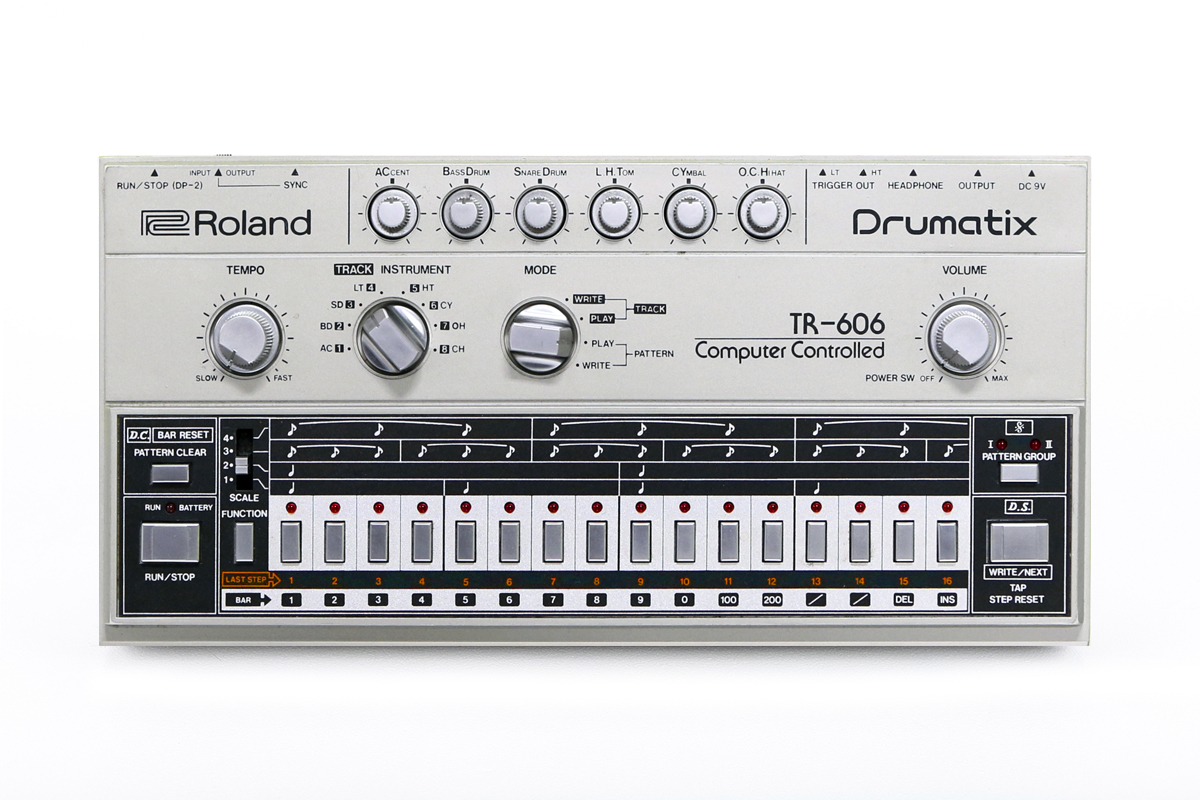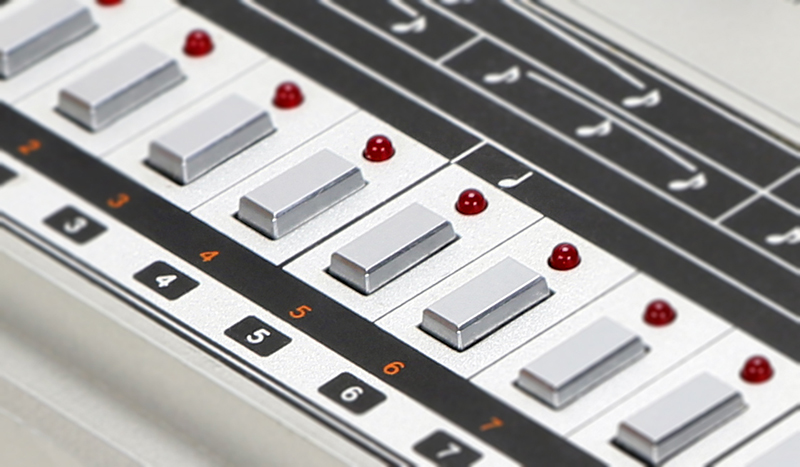The Roland TR-606 holds special relevance in the drum machine canon. The box causes equal reverence and perplexion—upon my own first encounter with the machine, I lifted it, cocked my head to the side and said, “Fam, what is this weird 303?”
Little did I know that this instrument would not only serve as my introduction to 16-step sequencing, but would also open a world of synthesized percussion I had never fathomed. I find myself thinking back to that day more and more often. I don’t know if it was the heat of my friend’s bedroom studio in summer, or the shifting metallic nature of the 606’s sounds—but it felt like I was uncovering a secret as much as I was programming, and I still revisit these tracks when I become nostalgic for my first forays into electronic music-making. Ever since, the 606 has remained present in my mind.
 A top-down view of the Roland TR606, an overlooked classic from the 80's
A top-down view of the Roland TR606, an overlooked classic from the 80's
The nature of the machine is so focused and purposeful that programming it can become a dreamlike trance. The panel invites tactile experimentation. You’re always aware of your place in the measure, and the LED-embedded steps guide you towards pattern creation, in a natural, almost symbiotic manner. It is not unlike playing the piano: press down a chord shape and hear a rhythm you've never imagined. Press down again: variation. Close your eyes. Think of the hagiography of Drexciya and Autechre: the acropolises that their music conjures, the nostalgia that their music inspires within you. Mists in an averted future. A whole universe made and unmade—centered around the pumping of synthetic percussion.
There are instruments in the world that deserve to be considered more often. The 606 is at once known and unknown, having provided the percussive backbone to some of the most pioneering music in the world, while still remaining entrenched in the shadow of its siblings.
The Silver Centurion
Introduced in 1981, the 606 was advertised alongside the 303 as a solution for guitarists who wanted to practice with a rhythm section, but didn’t want the hassle of negotiating a full band every session. This of course, didn’t work exactly as Roland had planned. These machines were not initially well-received, and their production cycle was cut short. By 1984, Roland had ceased production of these units entirely.

The story of Roland in the 80s, though, is the story of the phoenix. After the company took a general thrashing in the marketplace with their rhythm machines, Roland almost disowned them. TR-808s, 909s, and 606s could be found in pawn shops for as little as $50–100. And while that might at first seem like a mark of failure, this became a watershed moment in modern music: these powerful instruments suddenly had an unprecedented level of exposure and access. Young adults and people that grew up without substantial means could suddenly afford a substantial synth setup. This unlocked a whole new generation of music-makers and kickstarted some of the most important innovations in electronic music.
The 606 was the darkhorse of this group of instruments. With a punching, mids-focused sound somewhere between the tone of the 909 and the 808, the 606 was a compact and visually-direct drum machine that had a much more discreet form factor than its siblings. The 606 has a tight punch rather than the boom of the 808, and the percussion has a distinctly metallic quality, even the snare. This gives the 606 a unified feeling that has captured the imaginations of artists for generations.
From the early goth records from The Sisters of Mercy and IDM recordings of Warp’s Artificial Intelligence compilation to leading American dance luminaries such as Russel E.L. Butler, the 606 has been a mainstay in electronic music for almost 40 years. Its compact form and cohesive sound let the machine fit seamlessly into numerous styles of electronic music. In celebration of 606 day, we have created a playlist of songs that demonstrate the versatility and vitality of this wonderful instrument!








